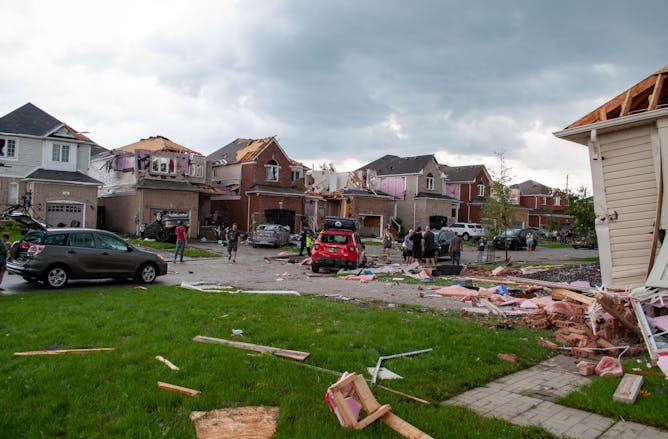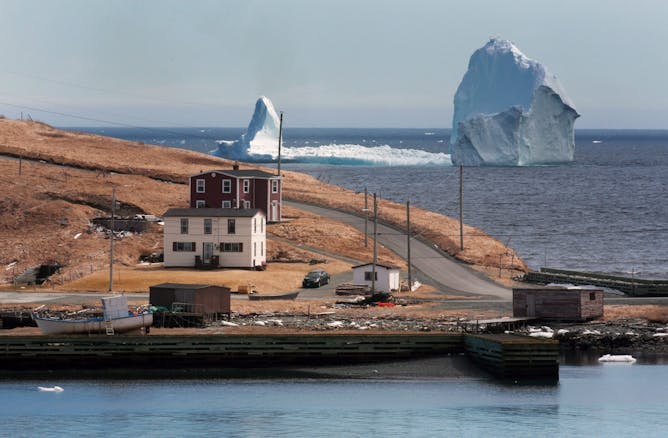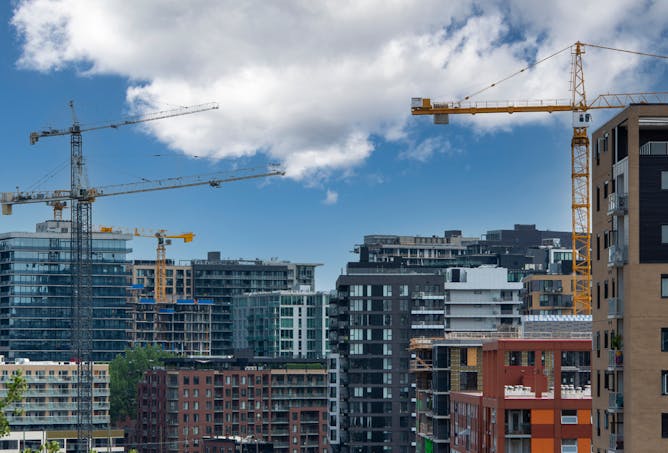|
The Toronto police force released data this week that includes information on strip searches, a controversial practice that often causes people to feel sexually assaulted by authorities.
The data show that in 2020 — even though Black people make up around 10 per cent of Toronto’s population — one in every three people who were strip-searched were Black, and nearly a third of all Indigenous people who were arrested were strip searched. The numbers are much lower for non-racialized and non-Indigenous people.
Today in The Conversation Canada, Monika Lemke of York University delves into the findings, pointing out that strip searches rarely if ever yield any information or evidence for police and simply serve to traumatize those who are subjected to them.
She writes: “Given that police rarely discover dangerous items, is it really worth subjecting countless people to searches that are degrading, infringe constitutional rights and traumatizing to the Black and Indigenous people who are disproportionately searched?”
Also today:
All the best.
|

|
Lee-Anne Goodman
Politics, Business + Economics Editor
|
|

Chief James Ramer of the Toronto Police Service speaks during a news conference releasing race-based data at police headquarters in Toronto.
THE CANADIAN PRESS/ Tijana Martin
Monika Lemke, York University, Canada
Strip searching is a police practice that evokes racial and sexual trauma, and it’s also ineffective. It’s finally time to talk about ending this oppressive police practice.
|

Several people were injured and homes destroyed after tornadoes touched down in Barrie, Ont., in July 2021.
(Duckdave/Wikimedia)
Keith Porter, Western University
Engineers, architects and builders can design and construct affordable new buildings that can resist tornadoes, floods and wildfires, but do not. We have that opportunity now.
|

A large iceberg passes near Ferryland, an hour south of St. John’s, Nfld., in April 2017.
THE CANADIAN PRESS/Paul Daly
Frédéric Cyr, Memorial University of Newfoundland
Between zero and 2,000 icebergs reach Newfoundland each spring, but the warming climate could see an end to Iceberg Alley.
|

The swimsuit issue continues to promote sexual attractiveness as women’s main currency.
(Sports Illustrated Swimsuit 2022)
Tracy Isaacs, Western University
We can promote inclusion and celebrate the beauty of diverse bodies without piggybacking on that relentless message about what makes women worthy.
|

Through a loving connection, children learn what it means to take safe risks.
(Pexels/Anna Shvets)
Nikki Martyn, University of Guelph-Humber
Dads and caregivers play important roles in supporting the development of loving relationships.
|

A recent investigation revealed that the autopilot in Tesla vehicles would switch off when a collision is imminent.
(AP Photo/David Zalubowsi, File)
Francesco Biondi, University of Windsor
The promise of self-driving cars remains unfulfilled, as the technology still requires drivers to co-pilot the vehicles to avoid collisions.
|

Patient safety incidents are the third leading cause of death in Canada.
(Shutterstock)
Fiona MacDonald, University of Northern British Columbia; Allison Kooijman, University of British Columbia; Carolyn Canfield, University of British Columbia; Nelly Oelke, University of British Columbia; Robert Robson, McMaster University
Patient safety incidents were already a leading cause of death in Canada. With that crisis converging with the demands of the COVID-19 pandemic, health care is being pushed to a breaking point.
|
La Conversation Canada
|

Les promoteurs immobiliers, principalement guidés par des objectifs de profitabilité, sont peu susceptibles de veiller aux diverses dimensions qui permettent d’assurer que la densification donne le plein potentiel de ses bénéfices environnementaux et sociétaux.
(Shutterstock)
Florian Mayneris, Université du Québec à Montréal (UQAM)
Dans le débat actuel sur l’étalement urbain, que dit la littérature économique récente sur les causes de l’étalement urbain et sur ses conséquences, notamment environnementales ?
|
Ukraine Invasion
|
-
Neophytos Loizides, University of Kent
Five ideas based on solutions in other countries that could help bring the various players to the table.
|
|
Podcasts
|
-
Gemma Ware, The Conversation; Daniel Merino, The Conversation
New discoveries keep changing our understanding of what dinosaurs looked like. Listen to The Conversation Weekly podcast.
|
|
Education
|
-
Rachana Desai, University of the Witwatersrand
Understanding the impact of the digital environment on children’s mental health requires a balanced consideration of not only the potential risks, but also the benefits of the online world.
|
|
Health
|
-
Royette T. Dubar, Wesleyan University
With online use ever-increasing, so is the rise of ghosting – when friends decide to disappear into the social ether.
|
|
Science + Tech
|
-
Mohiuddin Ahmed, Edith Cowan University; M Imran Malik, Edith Cowan University; Paul Haskell-Dowland, Edith Cowan University
Explorer came at the dawn of the public internet. For millions of people, it will always be their first experience of the World Wide Web.
|
|
|
|
| |
| |
| |
| |
|
|